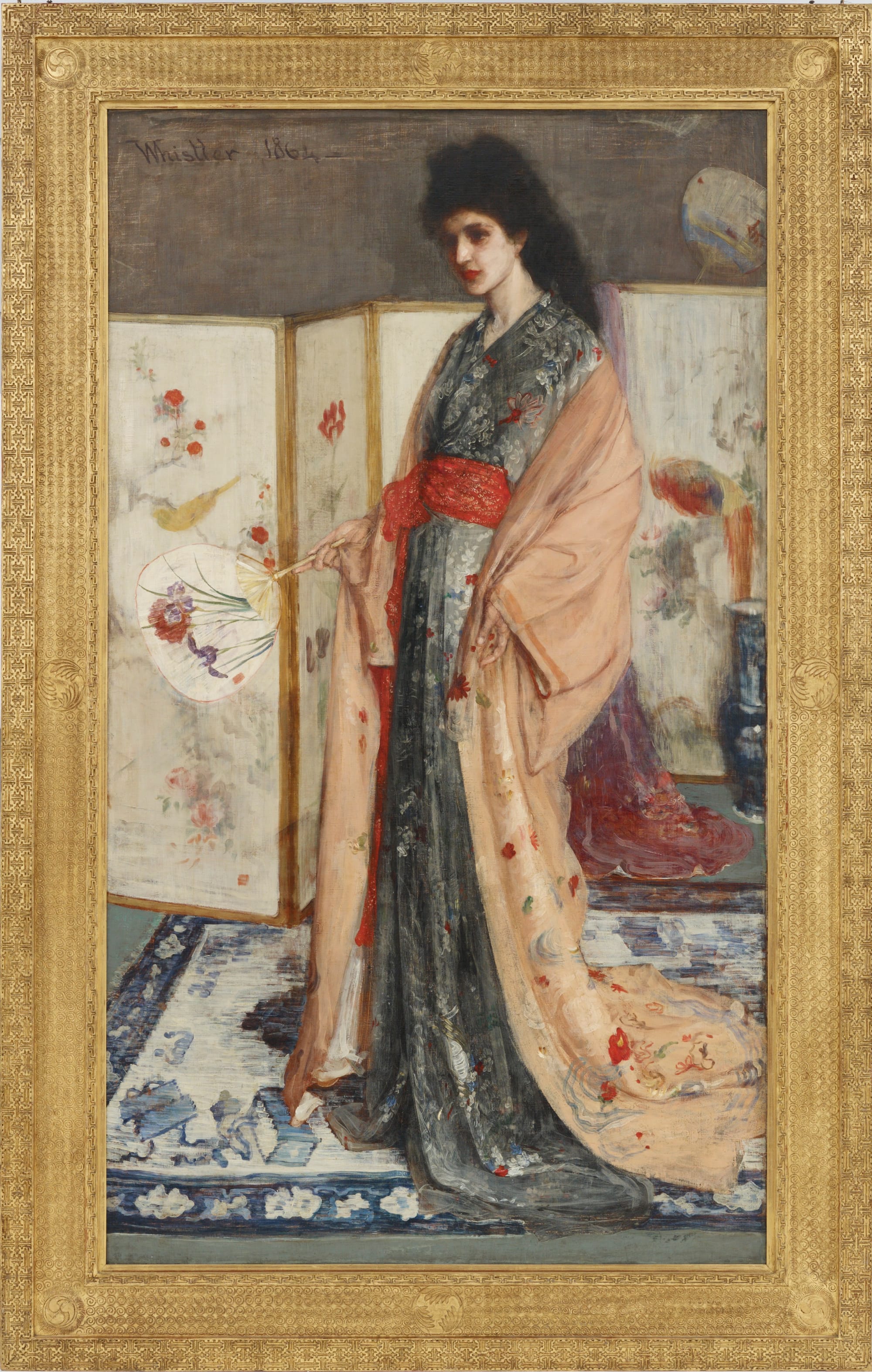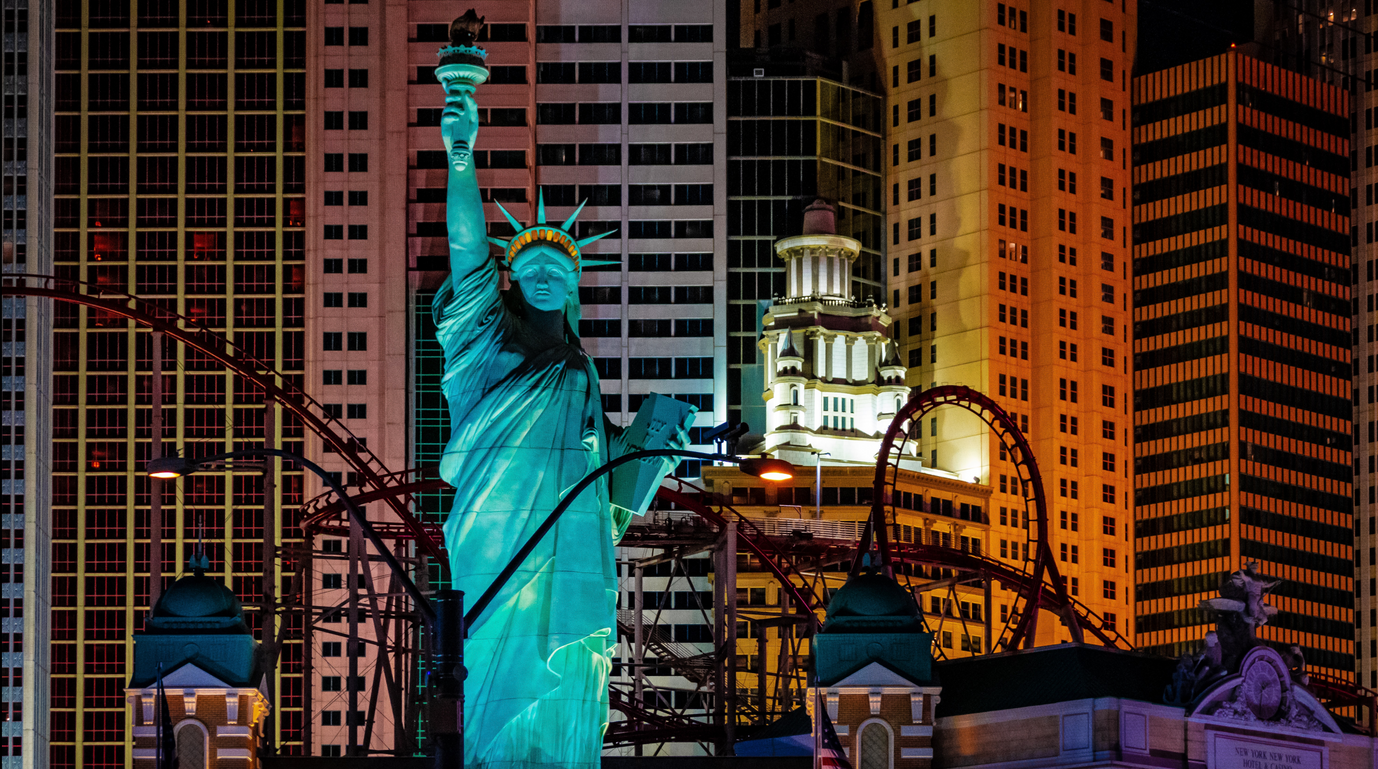
Gilded Respite
James McNeill Whistler's Peacock Room offers a glimmering oriental fantasy that rejects the simplicity of today's identity politics.
The Peacock Room is an oasis. The ornate fin-de-siècle dining room is frozen out-of-time in the Freer Gallery at the Smithsonian Museum of Asian Art. To reach it, I must first traverse the National Mall.
I pass protestors and picket signs. One reads, “Stop Asian Hate.” Another, “Dismantle All Racist Colonial States.” The two miles between the Capitol steps and the Lincoln Memorial have been home to decades of demonstrations, but today identity is the real battleground. Craving art as respite from politics, I escape into James McNeill Whistler’s Harmony in Blue and Gold: The Peacock Room.
Eyes must first adjust to the dim Victorian interior. Pendant lamps drip like stalactites from a ribbed ceiling, casting shadows upon walls of glimmering turquoise. Gilded peafowl adorn floor-to-ceiling shutters. Intricate walnut latticework displays over 250 ceramics. Amid this beguiling array of other-worldly objects, I am mesmerized by a portrait above the hearth.
A shock of dark curls billows behind the subject’s inclined head. Far-off eyes, bushy brows, and an aquiline nose punctuate olive skin. Her lips are the same vermillion as the sash that cinches her waist. A smoky silver kimono cascades down her svelte figure, pooling upon an oriental rug beneath hidden feet. Delicate fingers disappear against a peach dressing gown. One hand is open, the other languidly clasps a paper fan. She is Rose and Silver: The Princess from the Land of Porcelain.
Whistler’s Grecian muse was countess-to-be Christina Spartali. Here, the socialite embodies a variation on a familiar theme: Western woman, oriental fantasy. For the protestors on the Mall, the princess is likely to offend. To those who brandish identity as though a cudgel, the portrait exemplifies exoticism. Worse, it lumps together symbolism of mismatched Asian origins. Whistler, an American who trained in Europe and never traveled to Asia, consciously dismissed historical and geographic accuracy. Problematic, no?
Yet, when Parisian critics in 1865 dubbed the portrait a “pastiche chinoise,” this was not wholly negative. In fact, there was a general appetite for escapist art that offered refuge from the grim industrialism of 19th-century Europe.
“Art for art’s sake” was the guiding principle of the aesthetic movement of which Whistler was a leading figure. Beauty was to be treated as an end in itself. This outlook marked a departure from the Victorian view that arts and letters should be moral teachers. With the first volume of Marx's Das Kapital published in 1867, the aesthetics also offered a valuable counterweight to the budding trend of identifying industrialism as a utilitarian good for progressive society and, eventually, of using art as a tool for propagating political ideology. But isn’t all art inherently political? How can a room designed to display the chinaware of a British shipping magnate not but reek of imperialism?
Yes, the room is connected to structures that exploited people. But old art can mean new things. To me, the princess and the Peacock Room speak directly to the experience of being Asian American. Discourse around cultural appropriation, or the claim that Westerners can’t rightly borrow from other traditions, rarely sits right in my skin. If I wear Vietnamese clothing am I essentializing myself? If I don “normal” attire, do I kowtow to my oppressor? Granted, there is such a thing as perpetuating unhelpful stereotypes and disrespecting cultural symbols; that’s just called being rude. But there is a worthwhile distinction to be drawn between insensitivity and a genuine, if ungraceful, intrigue about different peoples’ explorations of the same timeless human affairs.
The experience of porous identity is not limited to those of mixed ethnicity. After all, whose sense of self is not the amalgamation of many origins, both complementary and contradictory? The princess exudes a beauty born from the confluence of contrasting cultures—a beauty today at risk of extinction by the politicization of aesthetics.
The Peacock Room’s original owner, Frederick Richards Leyland, chose his London mansion at 49 Princes Gate to showcase his set of blue-and-white Kangxi porcelain. An early patron of Whistler, Leyland acquired The Princess in 1875 and displayed it above his mantel. Around that same time, Leyland began to collect Asian pottery. While his collection grew, Leyland hired British Architect Thomas Jeckyll to redecorate his living room, including the installation of shelving for display. In April 1876, Jeckyll consulted Whistler about the color scheme of the room. With the patron away on business for the summer, Whistler seized the reins and transformed the space with his paintbrush.
Following Whistler's artistic intervention, demure Spanish leather panels and fading florals were awash with green and gold. Galled by the garish interior, Leyland and Whistler locked horns. Artist and patron settled on half the original rate. In December of that year, Whistler painted an allegorical mural on the wall opposite the princess: two sparring peacocks—one tramples coins of gold, the other spreads wings in defiance—their names: Art and Money. “I am really blind with sleep and blue peacock feathers,” Whistler told Leyland’s wife. In 1877, he invited the press to view the completed room, and was promptly forbidden from future entry.

After Leyland’s death in 1892, the room and the princess were separated, each changing hands among collectors for several years to come. Meanwhile, American industrialist Charles Lang Freer, a collector of Sino-ceramics in his own right, had been cultivating a patron-artist relationship with Whistler since 1887. Whistler passed away in 1903 and that same year, Freer bought The Princess from the prominent Scottish art collector Sir William Burrell. In 1904, then-owner Blanche Watney sold the Peacock Room, which Freer then purchased from London gallery Obach and Company. The room was disassembled, transported across the Atlantic, and reassembled in Freer’s Detroit home. Freer bequeathed the room and the entirety of his art collection to the Smithsonian upon his death in 1906. The princess and the Peacock Room were reunited in Washington by 1919.
The North Star of Freer’s taste was the belief that beautiful things belong together, no matter their origin. He had lined the shelves of the room with his eclectic collection of pottery, including earth-toned Syrian Raqqa ware, Korean celadons with coveted clair-de-lune glaze, and pitted Han funeral jars. In a letter to collector John Gellatly, Freer waxed:
Throughout the entire range of Whistler’s art, one feels the exercise of spiritual influences similar to those of the masters of Chinese and Japanese [art.] Of course, Mr. Whistler does unite the art of the Orient with that of the Occident.
But with East and West being such elusive essences, what did Freer mean? Edward Said, father of 1960s postcolonial theory, articulates the dilemma in his book Orientalism: “Words such as ‘Orient’ and ‘Occident’ correspond to no stable reality that exists as a natural fact. Moreover, all such geographical designations are an odd combination of the empirical and the imaginative.”
Said’s further commentary proves less accurate: “In the case of the Orient as a notion in currency in Britain, France, and America, the idea derives from the impulse not simply to describe, but also to dominate and somehow to defend against it.”
Said aptly detects that we are grappling with nebulous entities. Yet, to dismiss their existence as perpetuated by a perennial power grab is to dismiss the reality that the beauty of the princess stems from grafting together two distinct and indelible cultures. That this blend is not seamless further speaks to the cultural divide that arouses curiosity about the East by the West and vice versa. Victorian fascination with Asia feels problematic today when perceived solely through the lens of politicized identity. Today’s discourse is no closer to illuminating reality than a power-driven obsession with foreign culture.
In this contemporary environment, the Peacock Room is more valuable than ever. The Freer Gallery derives its stores from an imperial approach to art collecting. But Freer’s belief that all works of art go together allows different forms of beauty to coexist in ways that might be stifled under stricter curation.
As one whose identity spans different continents, the Peacock Room offers a sanctuary of unbridled expression. To others who share the experience of broad beinghood in an increasingly narrow discourse, go to the Peacock Room and, in the words of poet Robert Hayden, see what is havened here.
Grace Phan Jones is program coordinator at The Public Interest Fellowship. Grace holds a master of arts in political science from Boston College and is an alumna of St. John's College in Annapolis, Maryland.
Image: Screenview of Google Maps displaying the Peacock Room, National Museum of Asian Art. (Google Maps)
American Purpose newsletters
Sign up to get our essays and updates—you pick which ones—right in your inbox.
Subscribe








